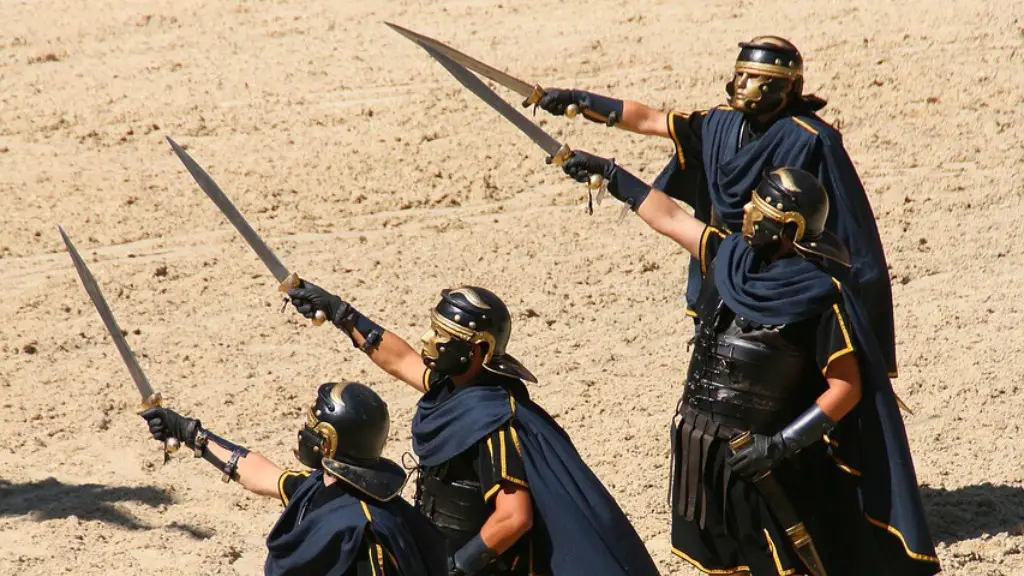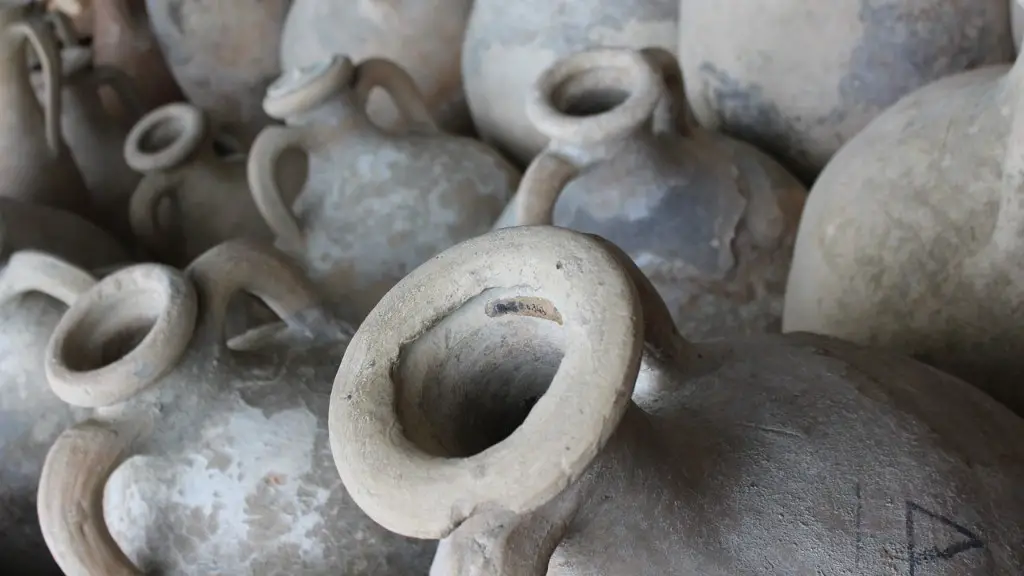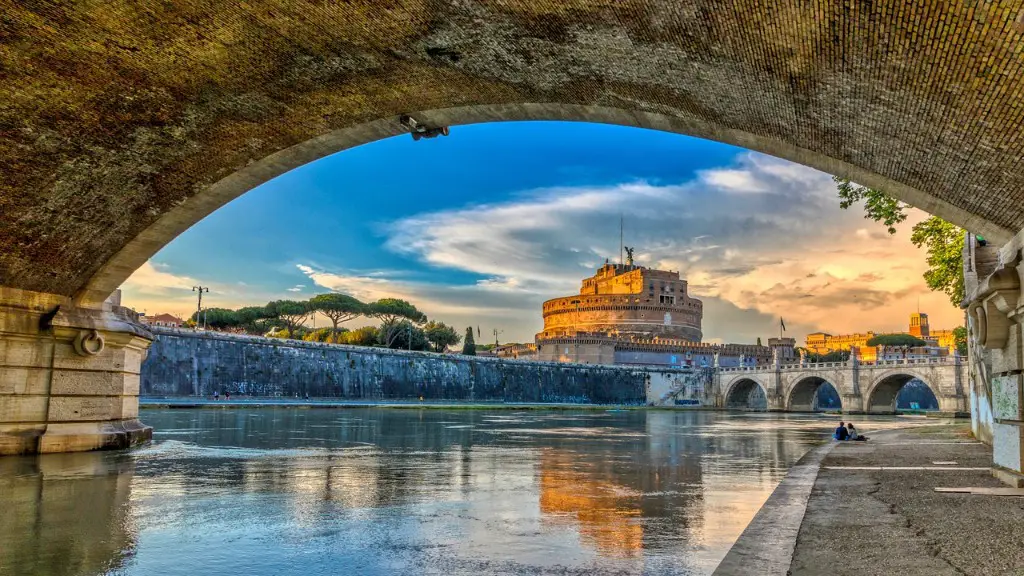Ancient Rome was one of the most populous cities of its time. In the height of the empire, it is estimated that over 1 million people lived within the city limits. This is an astounding number for a city that did not have the modern conveniences that we have today. So, how did they do it?
The Roman Republic was founded in 509 BC, and grew steadily in power. By the late Republic, Rome had become one of the richest and most powerful city-states in the Mediterranean. This power continued into the Roman Empire, which was founded in 27 BC. The Roman Empire reached its height under Emperor Constantine in the 4th century AD. At its peak, the Roman Empire was the largest and most powerful empire in the world.
How did people in ancient Rome live?
Most people in the cities of Ancient Rome lived in apartments called insulae. The wealthy lived in single family homes called domus of various sizes depending on how rich they were. The vast majority of the people living in Roman cities lived in cramped apartment buildings called insulae.
The decline in farming during the Roman Empire led to many people moving into the cities. The problem of overpopulation became especially apparent in the latter period of the Empire, when there were widespread problems with poor plumbing, increased disease, and even food shortages.
How densely populated was ancient Rome
Assuming that the one-million estimate is accurate, that would mean that the population density of ancient Rome was incredibly high, at 72,150 persons per sq km. This is an astonishingly high number, and would have made ancient Rome one of the most densely populated areas in the world.
Imperial Rome was the largest city the world had ever seen. At its peak in the fourth century AD, it was home to more than a million people. The city was a center of culture and politics, and its influence was felt throughout the world.
What time did Romans wake up?
In ancient Rome, the day began before dawn and ended at sundown. Work would be finished by noon, and the afternoons were spent pursuing leisurely activities like swimming and exercising. At sundown, Romans would get together for elaborate dinner parties that often went on until late in the evening.
Longevity has increased steadily through history. Life expectancy at birth was a brief 25 years during the Roman Empire, it reached 33 years by the Middle Ages and raised up to 55 years in the early 1900s. The main reasons for this increase are improved nutrition, sanitation, and medical care. As people have become more aware of the importance of these factors in maintaining health, they have taken steps to improve their lifestyles. This has resulted in a longer life expectancy for people all over the world.
Why was Rome so unstable?
But eventually, even the best of empires fall. And the fall of Rome was no different. There were three main reasons for the fall of Rome which are: political instability, economic and social problems, and finally a weakening of the frontier or border.
Starting with political instability, this was definitely a key factor in Rome’s decline. As the empire got bigger and bigger, it became harder and harder to manage. There were more and more people to govern, and it became increasingly difficult to please everyone. This led to a lot of unrest and eventually, to the fall of the empire.
Economic and social problems were also huge contributors to Rome’s decline. As the empire got bigger, the gap between the rich and the poor widened. This led to a lot of resentment from the poorer citizens, who felt they were being treated unfairly. Additionally, as the empire got bigger and more complex, the government had a hard time keeping up with the changing needs of the people. This resulted in things like a decline in public services, which made life more difficult for everyone.
Finally, a weakening of the frontier or border was also a factor in Rome’s decline. As the empire expanded, it became harder to protect the borders. This led to invasions
It is interesting to note that the average life expectancy for a man in Ancient Rome was only about 40 years. This is significantly shorter than the life expectancy of Romans today, which is around 5’5″. It is possible that the shorter life expectancy is due to the shorter average height of Ancient Romans.
Why did Rome fall because of slaves
Rome experienced many problems that led to its decline, including government and economic corruption. Rome’s economy was based on slave labor, which created a large gap between the rich and the poor. The rich grew wealthy from their slaves while the poor could not find enough work. This led to social unrest, which contributed to Rome’s decline.
In order to be considered fit enough to be a legionnaire, one had to be able to march 20 miles in 5 hours with the full armour and kit weighing 45lbs. This was an incredibly demanding feat, and it was a testament to the strength and conditioning of the Roman soldiers that they were able to accomplish it.
How big was the average Roman army?
The Roman republic was founded in 509 BCE, and for the first few hundred years of its existence, each legion was made up of 4,200 men. However, in times of peril, the legion size would expand to 5,000 men. After the Marian Reforms in 107 BCE, which aimed to increase the size and power of the Roman army, each legion numbered around 5,200 men. This number could sometimes increase to 6,000 men during times of war or unrest.
There are several possible explanations for why Rome’s population declined during this period. One theory is that the empire was simply too large and unmanageable by this point, and that the resources required to sustain such a large population were becoming increasingly scarce. Another possibility is that repeated barbarian invasions and other political turmoil made life in Rome increasingly unsafe and unstable, causing many people to flee the city. Whatever the cause, this population decline had a significant impact on the empire, contributing to its eventual fall.
What ethnicity were the Romans
The Latins were an Italic people who spoke the Latin language and were related to other Italic peoples such as the Falisci. They were a people with a marked Mediterranean character and were one of the main groups that made up the early Romans.
Invasions by Barbarian tribes was one of the main reasons for the fall of the Western Roman Empire. These tribes, like the Goths, would frequently invade and plunder the Empire, causing great damage. Over time, the Empire’s defences weakened, and it was eventually unable to resist the onslaught of the Barbarians.
What food did the Romans eat?
The Romans had a varied diet that depended on what was locally and seasonally available. They primarily ate cereals and legumes, with sides of vegetables, cheese, or meat. Their sauces were made out of fermented fish, vinegar, honey, and various herbs and spices. They had some refrigeration, but much of their diet was dependent on seasonal produce.
The Romans generally ate one main meal (the cena) a day, around sunset. Originally this was eaten around midday, preceded by a light meal, often just a piece of bread, early in the morning. This was called ientaculum (or breakfast). Supper or vesperna was a smaller meal in the evening.
Did Romans kiss each other
The Romans were quite keen on kissing and distinguished between different types of kisses. They would kiss their partners, families, friends and rulers on the hand or cheek (osculum), on the lips (basium) or passionately (savolium). This was a way of showing affection and respect and was quite commonplace.
The Ancient Greeks were serious about hygiene and public health. They established public baths and showers within their gymnasium complexes for relaxation and personal hygiene. The Greeks believed that cleanliness was important for both physical and spiritual health.
Conclusion
The city of Rome was founded by a man named Romulus in 753 B.C. Back then, the city was just a small village on the Tiber River. But it soon became a powerful empire. By 300 B.C., Rome ruled all of Italy. It then began to conquer other lands. At its height, the Roman Empire included England, Wales, most of Europe, and parts of North Africa and the Middle East. At its peak, the empire had over 60 million people.
Though there are many theories, the most likely explanation for how so many people were able to live in Ancient Rome is due to the city’s vast infrastructure and ability to support a large population. The city had a complex system of aqueducts that provided clean water, a central heating system, and a large number of public baths. Ancient Rome was also able to import food from surrounding areas, which helped to feed the large population.





